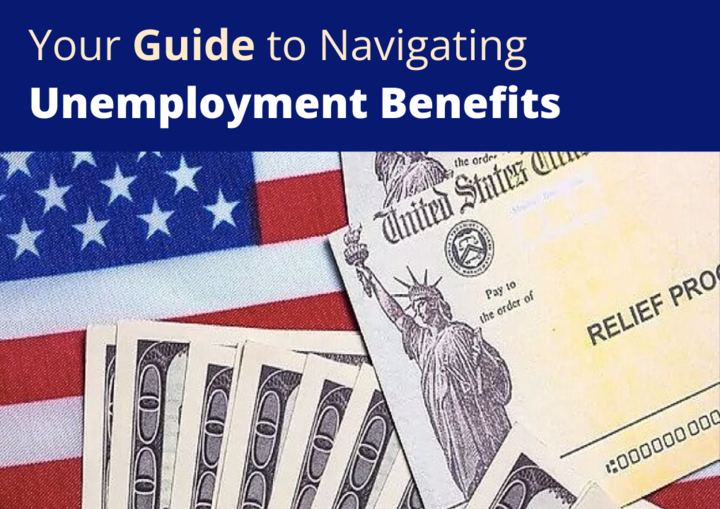Introduction: Understanding the Personal Loan Landscape
In today’s financial world, personal loans have become an essential tool for managing expenses, consolidating debt, or funding important life events. However, getting approved for a personal loan isn’t always straightforward, especially if you’ve faced rejection in the past. Whether you’re looking to finance home renovations, consolidate high-interest debt, or cover unexpected medical expenses, this comprehensive guide will walk you through proven strategies to maximize your chances of personal loan approval.
According to recent financial data, about 33% of Americans were denied personal credit in 2021, showing how common loan rejections can be. But rejection doesn’t mean you’re out of options – it simply means you need a strategic approach to improve your application’s strength.
Table of Contents
- 1.) Understanding Personal Loan Requirements
- 2.) Step 1: Check and Improve Your Credit Score
- 3.) Step 2: Calculate and Optimize Your Debt-to-Income Ratio
- 4.) Step 3: Research Lenders and Loan Options
- 5.) Step 4: Gather Proper Documentation
- 6.) Step 5: Apply for the Right Loan Amount
- 7.) Step 6: Consider Secured Loans or Co-Signers
- 8.) Step 7: Pre-Qualify Before Applying
- 9.) Step 8: Strengthen Your Application
- 10.) What to Do If Your Loan Application Is Denied
- 11.) FAQs About Personal Loan Approval
Understanding Personal Loan Requirements
- Credit Score and History: Your track record of managing debt
- Income Stability: Consistent income that's sufficient to cover loan payments
- Debt-to-Income Ratio (DTI): The percentage of your income that goes toward existing debt
- Employment History: Stable employment history (typically 1-2 years with the same employer)
- Loan Purpose: Some lenders have restrictions on how funds can be used
- Loan Amount: How much you're requesting relative to your income and credit profile
Step 1: Check and Improve Your Credit Score
Your credit score is often the single most important factor in loan approval decisions. Before applying for a personal loan, take these crucial steps:
Check Your Credit Reports from All Three Bureaus
- Errors or inaccuracies: Look for accounts you don't recognize, incorrect payment histories, or outdated information
- Late payments: Identify any late payments that are dragging down your score
- Credit utilization: Check how much of your available credit you're using
- Inquiries: Recent credit applications can temporarily lower your score
Dispute Credit Report Errors
If you find errors on your credit reports, dispute them immediately:
- Submit disputes online through each credit bureau's website
- Include supporting documentation
- Follow up to ensure errors are corrected
- Allow 30-45 days for investigation and resolution
Improve Your Credit Score Before Applying
If your credit score needs improvement, implement these effective strategies:
- Pay down credit card balances: Aim to get your credit utilization below 30% of your total available credit
- Make all payments on time: Set up automatic payments to avoid missing due dates
- Don't close old accounts: Longer credit history benefits your score
- Limit new credit applications: Avoid applying for other credit within 3-6 months of your loan application
- Consider a secured credit card: If you have limited credit history, a secured card can help build credit
- Become an authorized user: If a family member has excellent credit, ask to be added as an authorized user
Real-World Example: James had a credit score of 620 and was denied a personal loan. He paid down his credit card balances from 70% utilization to 25%, disputed an incorrect late payment on his credit report, and waited three months. His score improved to 680, and he was approved for a personal loan at a competitive rate.
Step 2: Calculate and Optimize Your Debt-to-Income Ratio
Your debt-to-income ratio (DTI) is the percentage of your monthly income that goes toward debt payments. Most lenders prefer a DTI of 36% or lower, though some may approve loans with DTIs up to 50%.
How to Calculate Your DTI:
- Add up all monthly debt payments (credit cards, loans, housing)
- Divide by your gross monthly income (before taxes)
- Multiply by 100 to get a percentage
For example, if your monthly debt payments total $2,000 and your gross monthly income is $6,000, your DTI is 33.3%.
Strategies to Improve Your DTI:
- Pay down existing debt: Focus on high-interest debt first
- Increase your income: Consider a side hustle, overtime, or asking for a raise
- Refinance or consolidate existing debts: This can lower monthly payments
- Avoid taking on new debt: Hold off on other major purchases
- Extend loan terms on existing debt: This lowers monthly payments (though increases total interest)
Real-World Example: Sarah had a DTI of 45% and was rejected for a personal loan. She used a $3,000 tax refund to pay off two high-interest credit cards and took on weekend freelance work that increased her income by $600 monthly. After three months, her DTI decreased to 34%, and she successfully qualified for a $15,000 personal loan.
Step 3: Research Lenders and Loan Options
Types of Personal Loan Lenders:
- Traditional Banks: Often have stricter requirements but may offer better rates for existing customers
- Credit Unions: Typically offer lower rates and more flexible terms than banks, especially for members
- Online Lenders: Often have more flexible criteria and faster application processes
- Peer-to-Peer Platforms: Connect borrowers with individual investors, sometimes approving loans that traditional lenders wouldn't
Research and Compare:
- Minimum credit score requirements: Typically range from 580-680 depending on the lender
- Income requirements: Minimum income thresholds vary widely
- Available loan amounts: Typically $1,000-$100,000
- Interest rates and APRs: Currently ranging from about 6% to 36%
- Loan terms: Usually 2-7 years
- Fees: Origination fees, late fees, prepayment penalties
- Customer reviews: Check satisfaction ratings and common complaints
Consider Specialized Lenders:
- For credit scores below 600, look into lenders specializing in fair or poor credit
- For inconsistent income, explore lenders that consider alternative income verification
- For specific uses (medical expenses, debt consolidation), check lenders offering specialized loans
Real-World Example: Michael was declined by his bank for a $20,000 personal loan despite having a good credit score of 700. His DTI was slightly high at 40%. He researched online lenders and found one that specialized in debt consolidation with more flexible DTI requirements. He was approved within 24 hours at a competitive 10.5% APR.
Step 4: Gather Proper Documentation
Essential Documents to Prepare:
- Proof of identity: Government-issued ID, passport, or driver's license
- Proof of address: Utility bills, lease agreement, or mortgage statement
- Recent pay stubs (typically last 2-3 months)
- W-2 forms or tax returns (last 2 years)
- Bank statements (last 3-6 months)
- 1099 forms for self-employed applicants
- Employment verification: Contact information for current employer
- Existing debt information: Statements for current loans and credit cards
- Asset information: Bank accounts, investments, property
For Self-Employed Applicants:
- Business tax returns (2+ years)
- Profit and loss statements
- Bank statements showing business deposits
- Client contracts or invoices
For Alternative Income Sources:
- Alimony or child support documentation
- Rental income statements
- Investment income documentation
- Social Security or pension award letters
Having these documents ready before applying not only speeds up the process but also helps you answer application questions accurately.
Step 5: Apply for the Right Loan Amount
Determining the Right Amount:
- Calculate your actual need: Be precise about how much you really require
- Consider your repayment capacity: Monthly payments should fit comfortably in your budget
- Don't request the maximum offered: Just because you can borrow $30,000 doesn't mean you should
- Factor in fees: Remember that origination fees (1-10%) are often deducted from the loan amount
Use the 28/36 Rule as a Guideline:
- Housing costs should not exceed 28% of your gross monthly income
- Total debt payments (including the new loan) should not exceed 36%
Real-World Example: Jennifer wanted to consolidate $18,000 in credit card debt. Though the lender pre-qualified her for up to $25,000, she requested only $18,500 (to cover the debt plus the 3% origination fee). This demonstrated financial responsibility to the lender and resulted in approval at a favorable rate of 11.5% compared to her credit card rates of 22-26%.
Step 6: Consider Secured Loans or Co-Signers
Secured Personal Loans:
- Require collateral (car, savings account, investments, etc.)
- Typically offer lower interest rates
- Easier to qualify for with fair or poor credit
- Lower risk for lenders, higher risk for borrowers (you could lose your collateral)
Co-Signer or Co-Applicant:
- A co-signer guarantees the loan but doesn't receive funds or have access
- A co-applicant applies jointly and shares responsibility and access
- Both improve approval odds if they have stronger credit and income
- Both are equally responsible for repayment if you default
Important Considerations:
- Choose a co-signer who understands their responsibility
- Be aware that late payments will affect both your credit scores
- Have a written agreement about repayment expectations
Step 7: Pre-Qualify Before Applying
If you’re struggling to get approved for an unsecured personal loan, these alternatives can significantly improve your chances:
Benefits of Pre-Qualification:
- Provides loan amount and rate estimates without affecting your credit score
- Allows you to compare offers from multiple lenders
- Helps identify the best lender for your situation
- Saves you from unnecessary hard inquiries
How to Pre-Qualify Effectively:
- Research lenders that offer pre-qualification
- Complete pre-qualification forms with accurate information
- Compare offers based on:
- APR (not just interest rate)
- Loan terms
- Fees
- Monthly payment
- Apply only to the lender with the best overall offer
Pro Tip: Pre-qualify with multiple lenders within a 14-45 day window to compare rates without multiple impacts on your credit score.
Step 8: Strengthen Your Application
Highlight Stability Factors:
- Length of residence: Longer time at your current address suggests stability
- Employment history: Emphasize long-term employment
- Banking relationship: Apply with a bank where you have an established history
- Consistent income: Show predictable income patterns
Address Potential Red Flags Proactively:
- Recent job change: Explain if it was for career advancement or higher pay
- Credit report issues: Provide brief explanations for past credit problems
- Recent large purchases: Explain any unusual spending on bank statements
- High debt-to-income ratio: Provide evidence of upcoming changes (debt payoff, income increase)
Adjust Timing Strategically:
- Avoid applying right after major financial changes
- Wait at least 3-6 months after opening new credit accounts
- Allow time for recent credit improvements to be reflected in your score
Real-World Example: Rebecca applied for a personal loan but was concerned about her recent job change. She included a letter explaining that her new position came with a 20% salary increase and better stability. She also highlighted her 7-year history at her previous employer. The lender approved her application despite the job change.
Lending for Bad Credit ✅ Loans Up to $5,000 – Fast and Simple Process ✅ All Credit Types Welcome – No Perfect Score Needed ✅ Quick Online Form – Get Matched in Minutes Ranked #1
FAQs About Personal Loan Approval
A: Approval timelines vary from minutes with online lenders to several days with traditional banks. Once approved, funding typically arrives within 1-7 business days.
A: While requirements vary by lender, most prefer scores above 660 for competitive rates. Some lenders work with scores as low as 580, but rates will be significantly higher.
A: Personal loans typically range from $1,000 to $50,000, though some lenders offer up to $100,000 for highly qualified borrowers. Your approved amount will depend on your income, credit score, and existing debt
A: A single loan application typically causes a small, temporary drop of fewer than five points. Multiple applications in a short period can have a more significant impact unless they’re rate-shopping within a 14-45 day window.
Conclusion: Your Path to Personal Loan Approval
Securing a personal loan requires preparation, strategy, and sometimes patience. By focusing on improving your credit score, reducing your debt-to-income ratio, applying with the right lenders, and presenting your financial profile in the best possible light, you can significantly increase your chances of approval.
Remember that loan rejections are common and often temporary setbacks. Use them as opportunities to identify areas for financial improvement. With time and focused effort on the strategies outlined in this guide, you can strengthen your financial profile and increase your chances of not just getting approved for a personal loan, but securing one with favorable terms and rates.
Last updated: May 19, 2025
Did you find this guide helpful? Share it with friends and family who might be considering a personal loan application. For personalized advice on your specific financial situation, consider consulting with a financial advisor.







